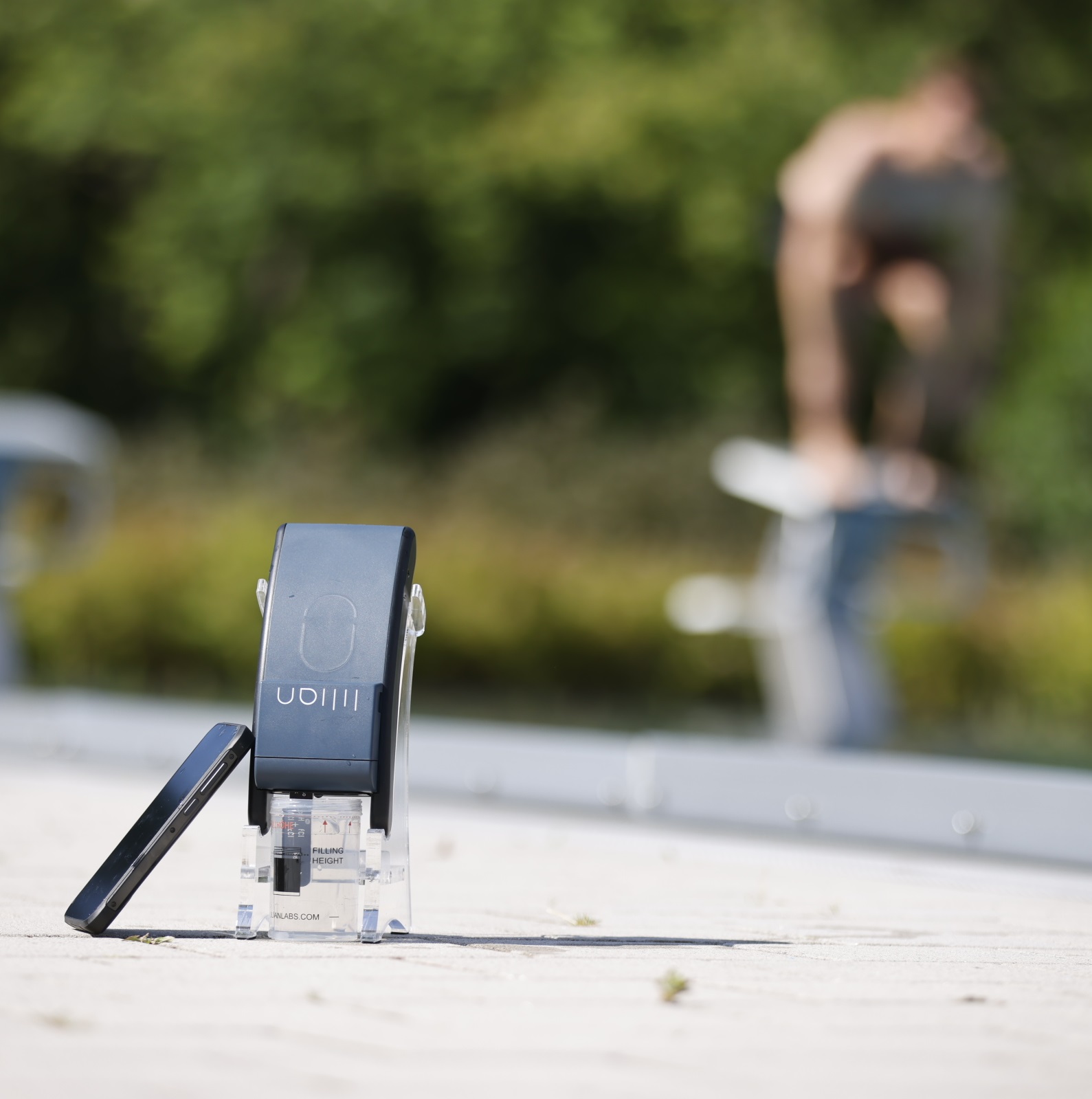
Reaction time for chlorine faster with LILIAN than with 10mm cuvettes?
When measuring with photometers, both measured values must be determined one after the other: First the free chlorine, then the value for total chlorine. If the measured value for free chlorine is subtracted from the total chlorine, the value for combined chlorine in the water is obtained. When measuring with photometers that use 10 mm cuvettes, you usually have to wait between 60-120 seconds between the measurements for free chlorine and total chlorine. This time is required for the chemical reaction that causes the colour change for total chlorine.
We are therefore often asked: How is it possible that with the LILIAN both measured values for chlorine can be determined within 60 seconds, is a different chemical used here? No, the chemicals contained in the SensoSticks for the LILIAN are defined by DIN19643 and ISO 7393-2. The reason lies elsewhere: Due to the microstructures in the SensoStick, the smaller sample volume and thus the significantly smaller amount of chemicals, the reaction in the SensoStick takes place much faster than in 10 mm cuvettes, namely within a few seconds.
This is one of the reasons why the combined measurement of chlorine and pH with the LILIAN takes less than 1 minute.